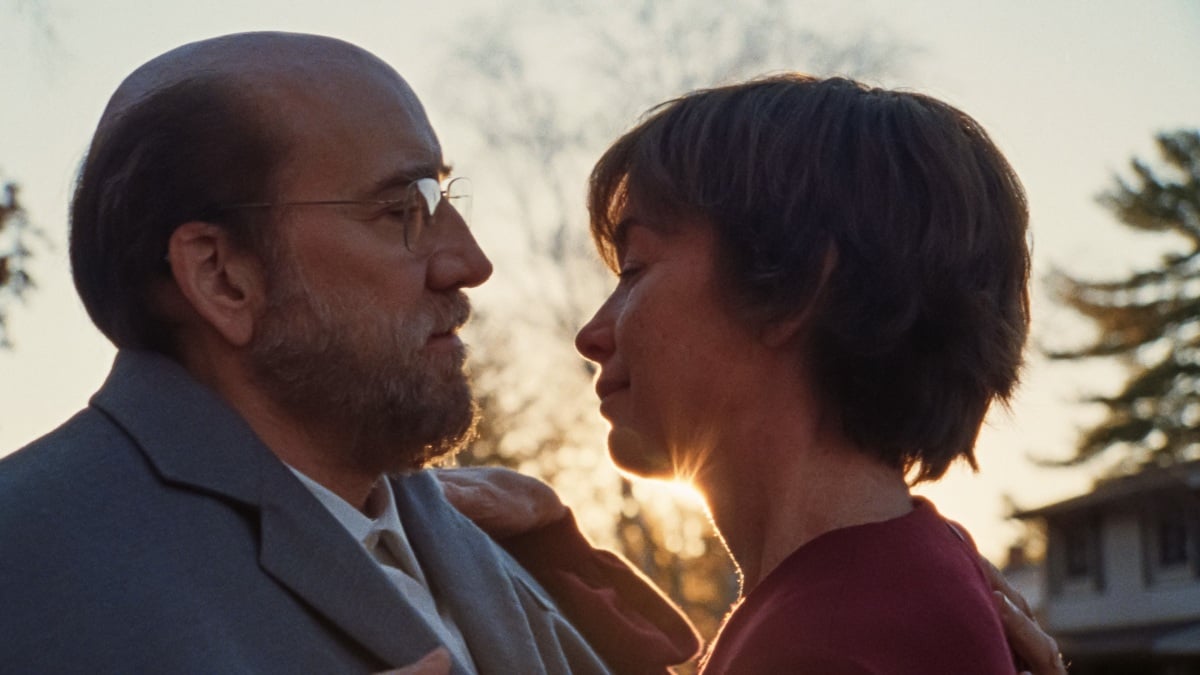If you love Nicolas Cage and the Talking Heads, then Dream Scenario has the scene for you.
The film follows Paul Matthews (Cage), a mild-mannered family man and biology professor who begins showing up in millions of strangers’ dreams. He welcomes his newfound celebrity status at first. However, when the dream versions of himself change from friendly bystanders to violent monsters, he becomes a social pariah. His personal life suffers too, with his wife Janet (Julianne Nicholson) separating from him.
In the final act of Dream Scenario, we learn that Paul’s appearance in the global subconscious has led to the creation of technology that allows you to travel into other people’s dreams. Estranged from his family, Paul uses the tech to try to reconcile with Janet. The film’s last sequence sees him succeeding in entering Janet’s dream. And that’s where the Talking Heads come in.
Earlier in the film, Janet and Paul discuss why Janet isn’t seeing Paul in her dreams. And even if he were to appear to her, what fantasy would she like him to inhabit? To Paul’s surprise, Janet’s answer is more Stop Making Sense than Magic Mike. She’d want to see him in David Byrne’s oversized suit from Jonathan Demme’s iconic concert film. So, when Paul finally makes it into Janet’s dream — where she’s being burned at the stake — he makes her wish come true by wearing the big suit himself.
Watching Paul lumber through fire to save his estranged wife while wearing such a ridiculously large suit is a moment of levity in an otherwise sadder portion of the film. That need for humor is what inspired Dream Scenario writer-director Kristoffer Borgli to incorporate the suit into the film in the first place.
‘Dream Scenario’s Kristoffer Borgli on the challenges of writing and filming dream sequences
“The ending is pretty tender and sad, melancholic and romantic, and I felt like it also needed to be a little bit comedic,” Borgli told Mashable in an interview. “So, I was thinking about costumes that would make [Paul] look kind of funny.”
For inspiration as to what specific costume he could use, Borgli turned to his own life. “My father was a professor [like Paul], whom I never thought of as particularly cool,” he explained. “He also had a Talking Heads phase. And there’s something about that, that feeling that there was a coolness in the past. We don’t see it now, and his kids think he seems boring, but then there’s that little bit of backstory, like he was cool at a certain point.”
As for the rest of the ending scene, in which Paul and Janet embrace, and Paul whispers that he wishes this dream were real, Borgli views some elements of it as sad, and others as more optimistic.
“I think it’s sad that Paul had to go through all of this to realize that he actually had a pretty good life. He lost track of something so important in this chase for unattainable desires of career and status, and then he ends up losing it all,” Borgli said. “So, in that sense, the ending is sad.”
Yet Borgli sees a more positive flip side to Paul’s downfall as well. After all, he’s working to reconcile with Janet by playing out one of her own fantasies, even though he’d ridiculed it lightheartedly earlier on. “He’s clearly learned a lesson and is trying his best,” Borgli concluded. “I think it’s a bittersweet ending, and there’s hope there.”
Dream Scenario is now playing in theaters.










